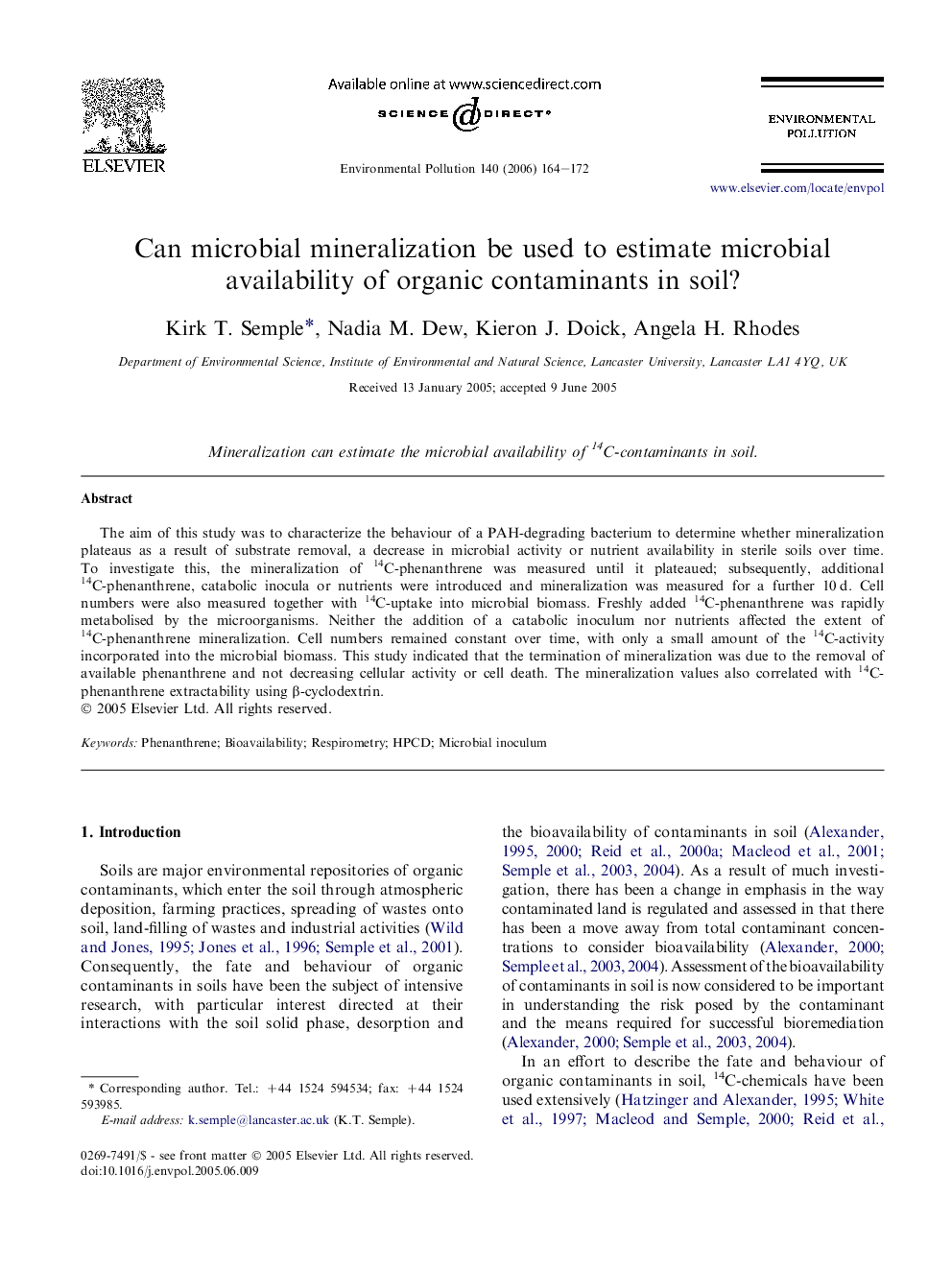| Article ID | Journal | Published Year | Pages | File Type |
|---|---|---|---|---|
| 4428042 | Environmental Pollution | 2006 | 9 Pages |
The aim of this study was to characterize the behaviour of a PAH-degrading bacterium to determine whether mineralization plateaus as a result of substrate removal, a decrease in microbial activity or nutrient availability in sterile soils over time. To investigate this, the mineralization of 14C-phenanthrene was measured until it plateaued; subsequently, additional 14C-phenanthrene, catabolic inocula or nutrients were introduced and mineralization was measured for a further 10 d. Cell numbers were also measured together with 14C-uptake into microbial biomass. Freshly added 14C-phenanthrene was rapidly metabolised by the microorganisms. Neither the addition of a catabolic inoculum nor nutrients affected the extent of 14C-phenanthrene mineralization. Cell numbers remained constant over time, with only a small amount of the 14C-activity incorporated into the microbial biomass. This study indicated that the termination of mineralization was due to the removal of available phenanthrene and not decreasing cellular activity or cell death. The mineralization values also correlated with 14C-phenanthrene extractability using β-cyclodextrin.
